Q: When did you take the first step into digital
art with Photoshop?
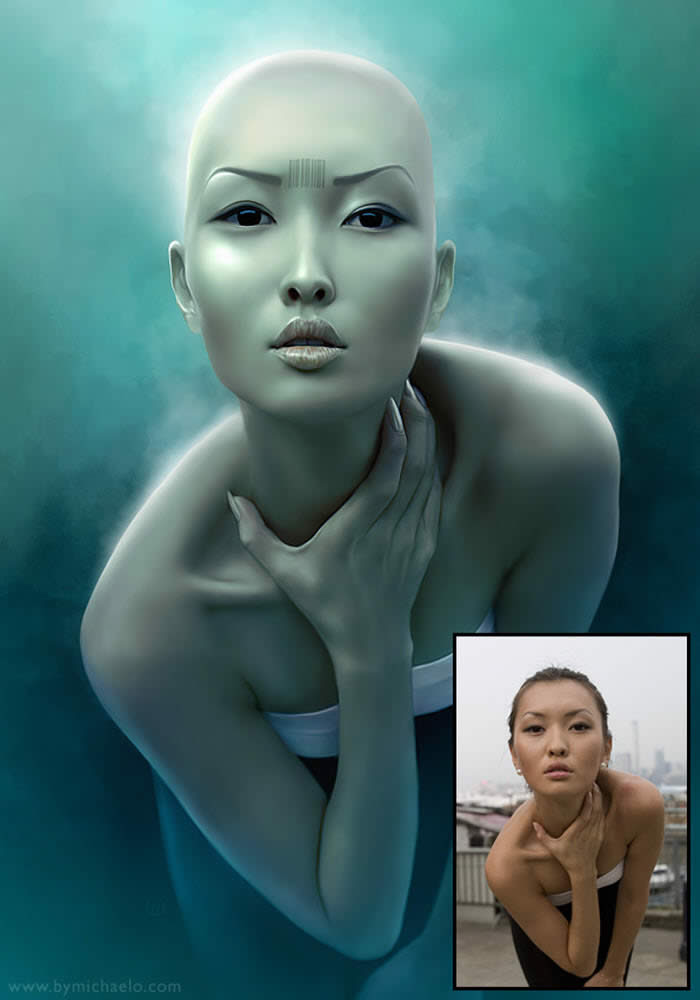
“Last Race”
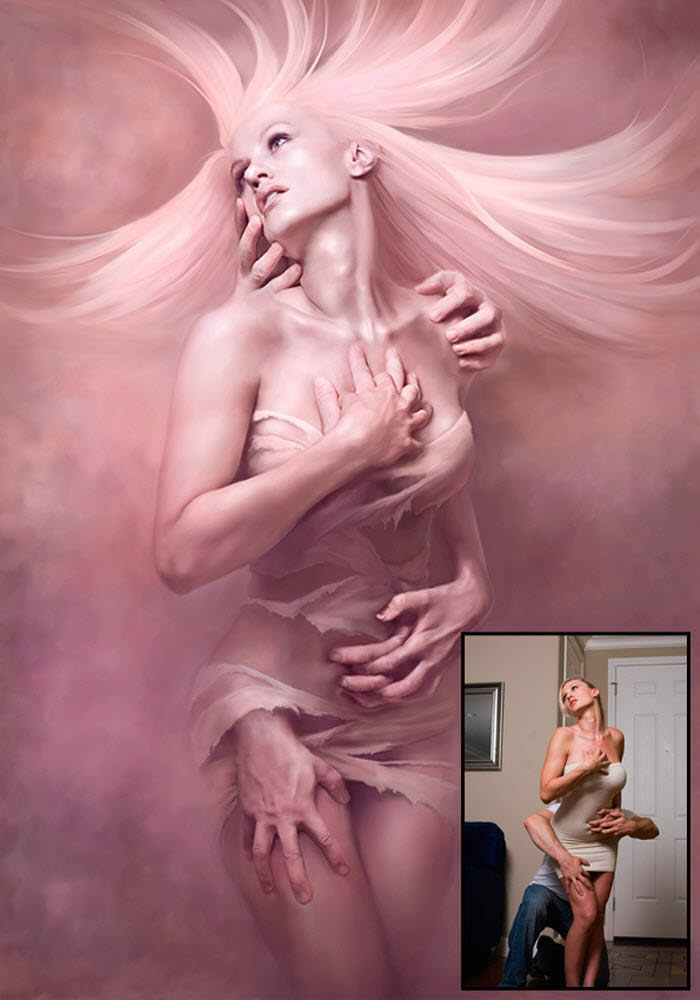
“Under My Skin”
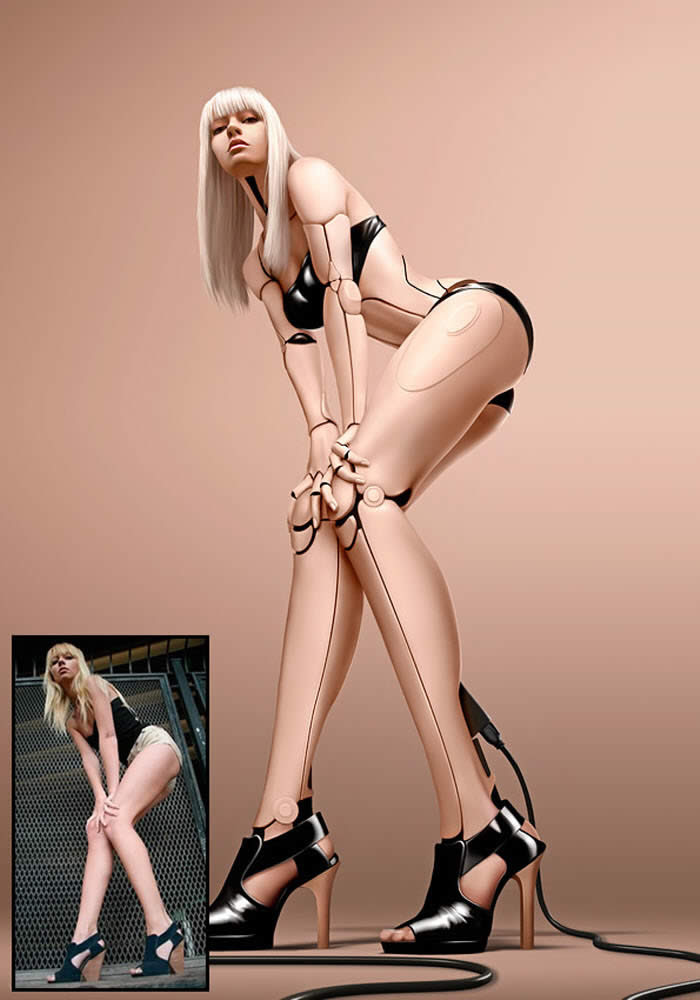
“AmalgaMATE 3″

“Apple”

“Carve Your Own Destiny”
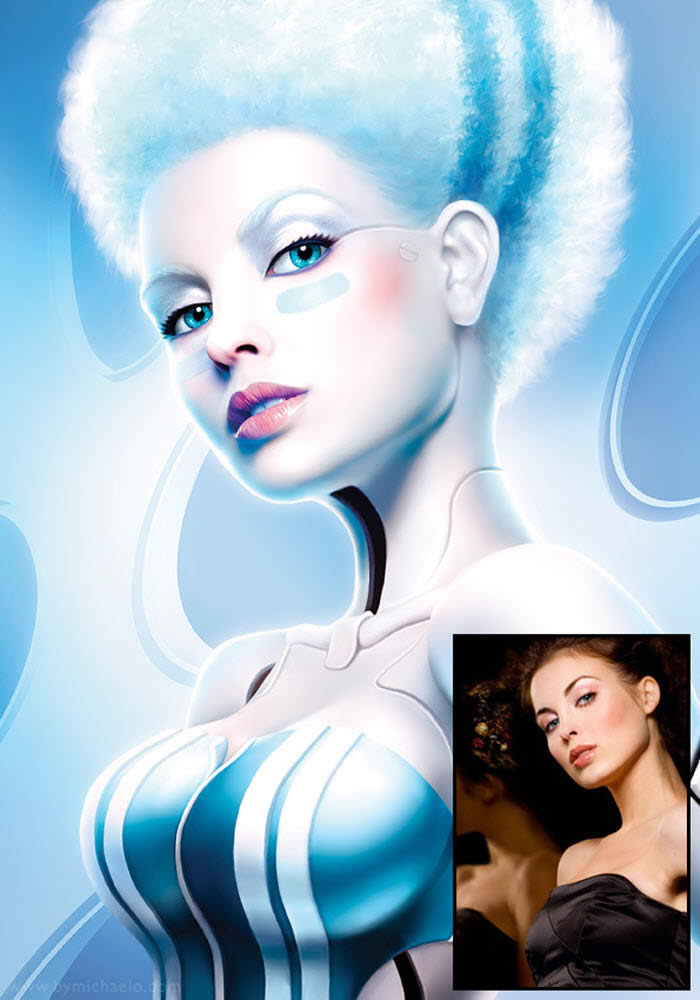
“Dexteria”
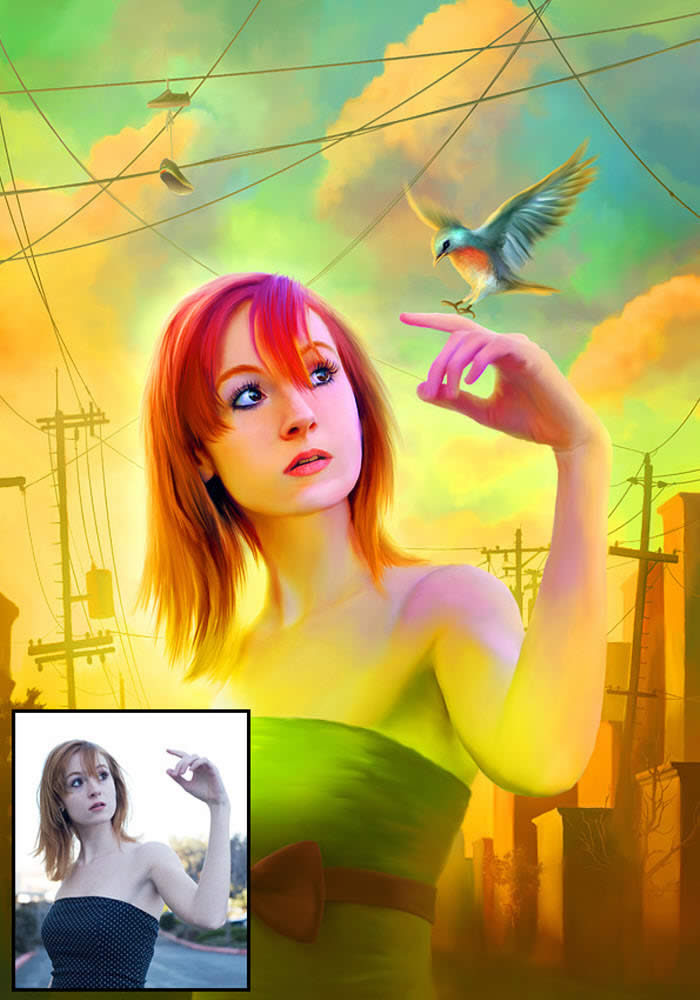
“He Chose Me”
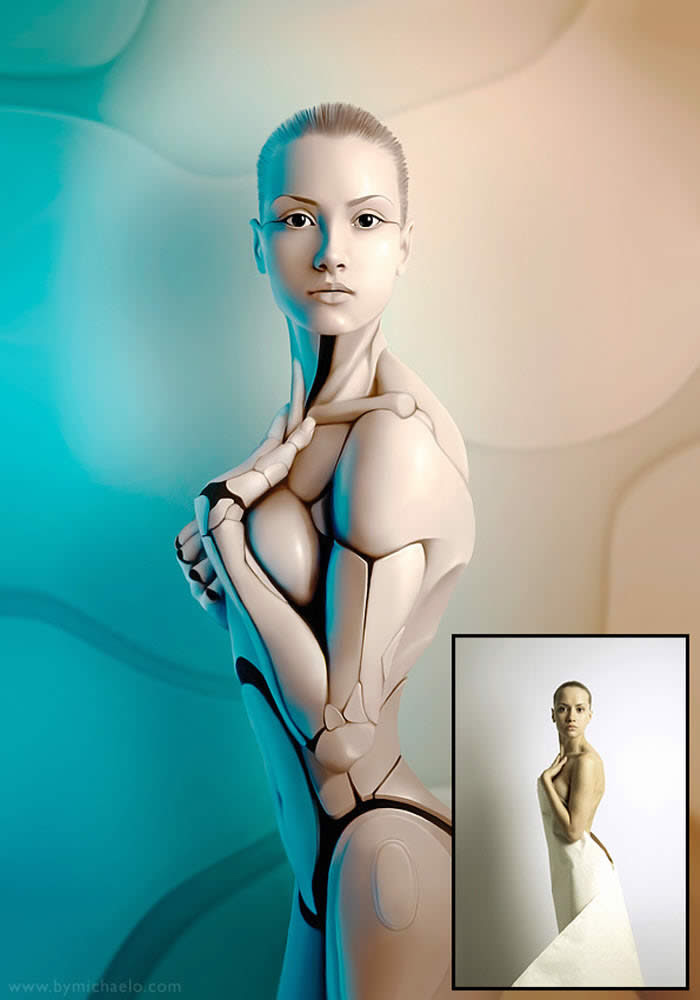
“AmalgaMATE”
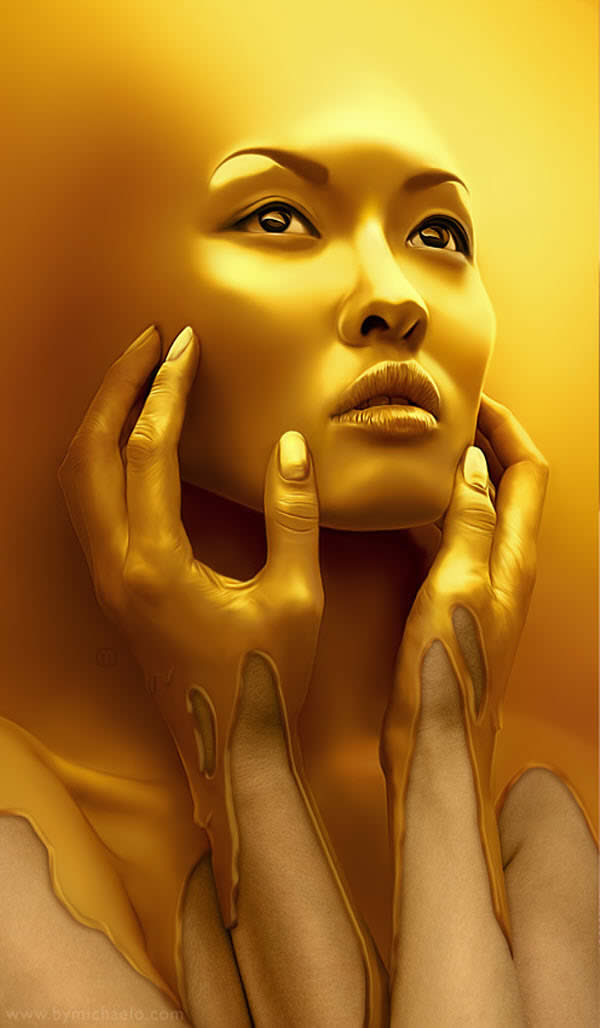
“Gold Rush”
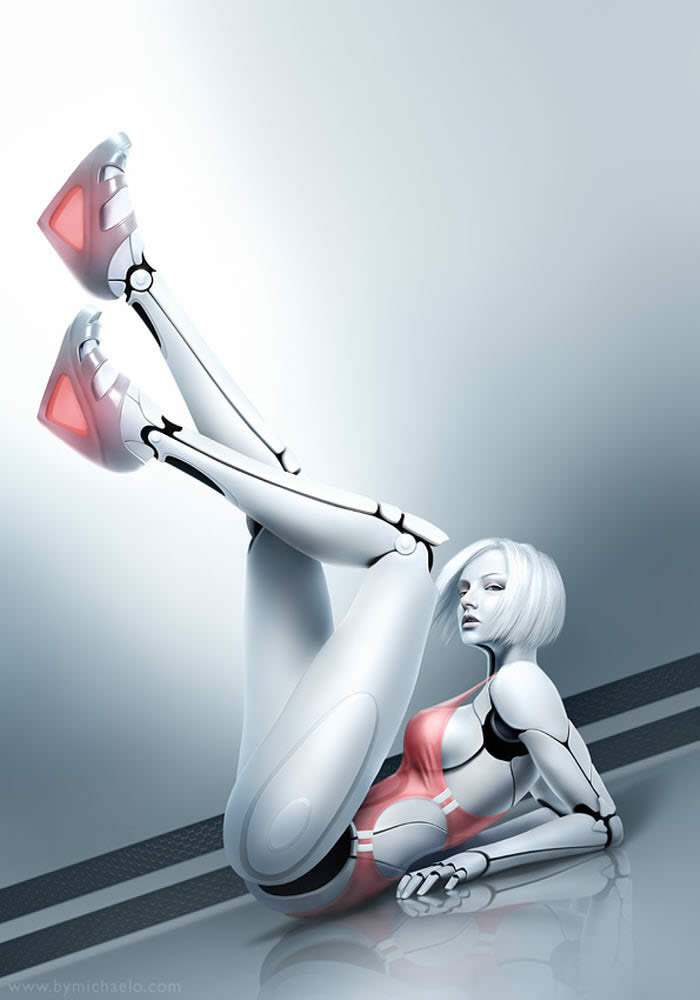
“AmalgaMATE 4″
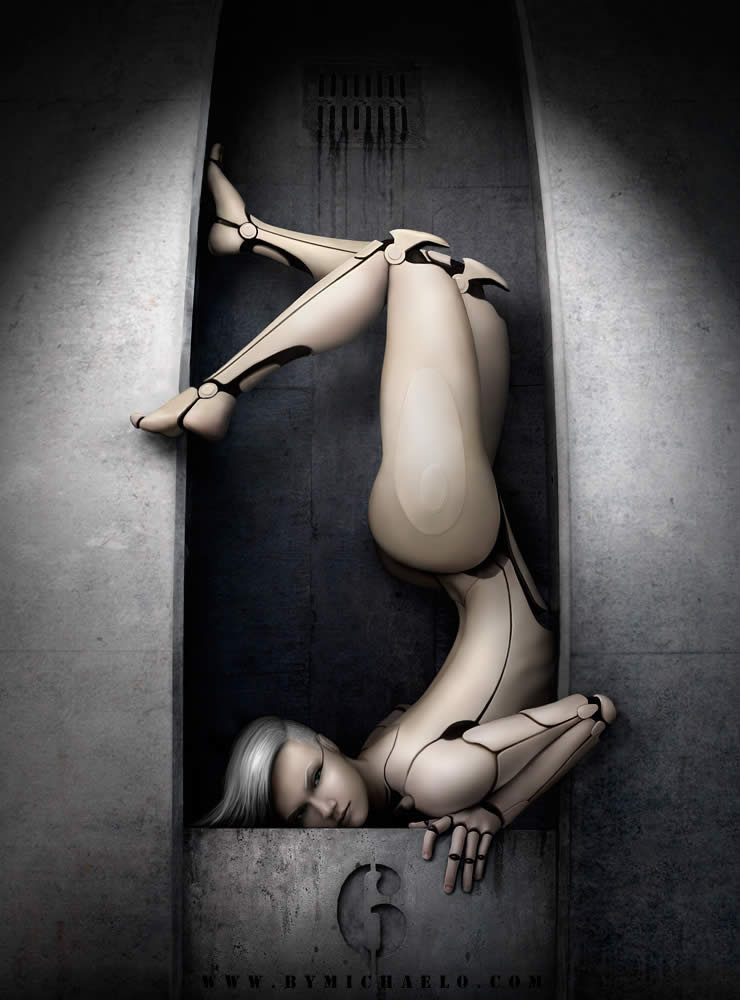
“AmalgaMATE6″



















art with Photoshop?
A:
When I started high school in ’96, the computer had not yet taken the design world by storm so all of the classes I had were in traditional art mediums. In my junior year I took a class in AutoCAD for mechanical drafting, which I found boring so I would sit in the back of the class and play around in Photoshop and 3D Max. That’s when I really got a taste for the computer arts.
Eventually I “obtained” a home version of photoshop and I have been spending hours in front of the computer ever since.
When I started high school in ’96, the computer had not yet taken the design world by storm so all of the classes I had were in traditional art mediums. In my junior year I took a class in AutoCAD for mechanical drafting, which I found boring so I would sit in the back of the class and play around in Photoshop and 3D Max. That’s when I really got a taste for the computer arts.
Eventually I “obtained” a home version of photoshop and I have been spending hours in front of the computer ever since.
“Last Race”
Q: How did you make the transition from amateur to professional?
A:
By luck of course! Around the time I was a junior in college, I already had two jobs as a graphic designer. One designing Winamp skins for movie studios in LA and the other was a startup graphic design company I began with a fellow student.
It seemed that graphic design related work would be a permanent fixture in my future career but it just felt like work and there was not enough focus on creatively. So, I would spend my free time getting that creativity high by manipulating photos.
Eventually I became interested in finding my own models for my photo manipulation work so I signed up for ModelMayhem.com to find them. While there, a number of photographers and other professionals came to me, asking if I could manipulate their photo into artwork for money. The rest is history.
By luck of course! Around the time I was a junior in college, I already had two jobs as a graphic designer. One designing Winamp skins for movie studios in LA and the other was a startup graphic design company I began with a fellow student.
It seemed that graphic design related work would be a permanent fixture in my future career but it just felt like work and there was not enough focus on creatively. So, I would spend my free time getting that creativity high by manipulating photos.
Eventually I became interested in finding my own models for my photo manipulation work so I signed up for ModelMayhem.com to find them. While there, a number of photographers and other professionals came to me, asking if I could manipulate their photo into artwork for money. The rest is history.
“Under My Skin”
Q: What’s the hardest part about being a freelance artist?
A:
The unpredictable paycheck can be very frustrating. I was lucky enough to begin my career while still in college, living with my parents and no bills to pay. When I moved out, I was forced to focus on work that brought in a paycheck and there were times when I had too much work to deal with and other times when I had nothing to do.
The difference could change on a daily basis and the uncertainty was scary at times. It was those slow days that made me think “maybe I should just get a regular job and forget working on my own” but then a new client would contact me and I get back in the saddle. I still do various graphic design work unrelated to my portfolio and have even had part time jobs to supplement some of those slow days.
The unpredictable paycheck can be very frustrating. I was lucky enough to begin my career while still in college, living with my parents and no bills to pay. When I moved out, I was forced to focus on work that brought in a paycheck and there were times when I had too much work to deal with and other times when I had nothing to do.
The difference could change on a daily basis and the uncertainty was scary at times. It was those slow days that made me think “maybe I should just get a regular job and forget working on my own” but then a new client would contact me and I get back in the saddle. I still do various graphic design work unrelated to my portfolio and have even had part time jobs to supplement some of those slow days.
“AmalgaMATE 3″
Q: Can you give an example of how your artistic knowledge about drawing and painting helped you with Photoshop?
A:
I don’t really see a difference in the requirements for a traditional or digital artist. I believe that 50% of skill in art is a natural born gift. Another 50% is developed with practice, practice, practice. Paintbrushes and computers are just tools. The standard rules of art, like composition, always apply and the medium is just a personal choice.
So, everything I learned in basic art classes still applies today.
I don’t really see a difference in the requirements for a traditional or digital artist. I believe that 50% of skill in art is a natural born gift. Another 50% is developed with practice, practice, practice. Paintbrushes and computers are just tools. The standard rules of art, like composition, always apply and the medium is just a personal choice.
So, everything I learned in basic art classes still applies today.
“Apple”
Q: Why do you do photomanipulation rather than painting from scratch?
A:
For 3 reasons. First, it easily helps me build the proper foundation for the lighting and proportions. A lot of people assume that I can paint realistically but that has always been one of my weakest skills. Second, it shows the viewer the difference between the original photograph and the final artwork, which most people seem to find interesting.
Third and most importantly, it keeps the subject looking like themselves. A lot of the commercial work I do is for clients who are looking for artwork that will help promote their image and there is no easier way to do that then to build the artwork right off of their photo.
For 3 reasons. First, it easily helps me build the proper foundation for the lighting and proportions. A lot of people assume that I can paint realistically but that has always been one of my weakest skills. Second, it shows the viewer the difference between the original photograph and the final artwork, which most people seem to find interesting.
Third and most importantly, it keeps the subject looking like themselves. A lot of the commercial work I do is for clients who are looking for artwork that will help promote their image and there is no easier way to do that then to build the artwork right off of their photo.
“Carve Your Own Destiny”
Q: Do you usually plan your work or do you just get inspired by the picture you are going to work with?
A:
When I first started developing my style I used professional photos from other photographers for reference. At the time I simply chose images online that inspired me but because my technique involves simply painting over a photo, I ran into copyright issues so I had to abandon that method and begin taking my own photographs.
I believe my skill in photography still needs to be sharpened but oddly enough, a photo of poor quality makes for a more interesting transition into a piece of art. These days I start with a concept before I choose a model and shot.
Since my work is usually focused on strong concepts, I consider this step to be very important. Ideas can come to me at any time and the only thing I need to do is remember to write them down.
When I first started developing my style I used professional photos from other photographers for reference. At the time I simply chose images online that inspired me but because my technique involves simply painting over a photo, I ran into copyright issues so I had to abandon that method and begin taking my own photographs.
I believe my skill in photography still needs to be sharpened but oddly enough, a photo of poor quality makes for a more interesting transition into a piece of art. These days I start with a concept before I choose a model and shot.
Since my work is usually focused on strong concepts, I consider this step to be very important. Ideas can come to me at any time and the only thing I need to do is remember to write them down.
“Dexteria”
Q: Can you describe in few steps what is the process of your work?
A:
I start with an idea in my head. Next I choose a model that best suits the look I need (facial features, skin tone, hair color, etc…). Then I take about 50 to 100 photos of the model, slightly changing the lighting or pose until I feel we got it. Next I choose one picture to use or sometimes two or three that can be meshed together. The background is always replaced in Photoshop with something more fitting for the theme.
From there I do a number of color and value adjustments to make the image more artistic and less photographic. Lastly the image is airbrushed, smudged and blurred to simulate the painted look.
I start with an idea in my head. Next I choose a model that best suits the look I need (facial features, skin tone, hair color, etc…). Then I take about 50 to 100 photos of the model, slightly changing the lighting or pose until I feel we got it. Next I choose one picture to use or sometimes two or three that can be meshed together. The background is always replaced in Photoshop with something more fitting for the theme.
From there I do a number of color and value adjustments to make the image more artistic and less photographic. Lastly the image is airbrushed, smudged and blurred to simulate the painted look.
“He Chose Me”
Q: What do you like about being an artist?
A:
One of the most appealing aspects for me being an artist is the idea that my work could potentially last far beyond my own physical life. The way I see it, this life passes in the blink of an eye anyway so if I’m going to spend that time it wisely, I should focus on inspiring others and making sure my work is unique and strong enough to last for generations to come.
This is one of my driving forces and why I respect past artists whose work still inspires people to this day.
One of the most appealing aspects for me being an artist is the idea that my work could potentially last far beyond my own physical life. The way I see it, this life passes in the blink of an eye anyway so if I’m going to spend that time it wisely, I should focus on inspiring others and making sure my work is unique and strong enough to last for generations to come.
This is one of my driving forces and why I respect past artists whose work still inspires people to this day.
“AmalgaMATE”
Q: How do you attract new clients?
A:
“Attract” is the right word because clients do have to be lured to you in a sense. I’ve had very little luck with cold calling and trying to bring in new clients by contacting them. The best clients are always the ones that come to you.
If I had to list the best ways to bring in new clients I would order it like this:
1) Most importantly, you must have a strong, consistent portfolio. I’m not a doctor or lawyer so nobody cares what school I went to. This is a visual business so how my work looks is all that really matters.
2) Advertising helps. I took every opportunity to be featured in articles, interviews, contests, and whatever else to help get my portfolio seen.
3) A good business sense and experience in dealing with people is important. Good phone conversational skills and proper grammar in emails can go a long way. If you don’t have these things, you may still get the job but it is likely that the client will not come back.
“Attract” is the right word because clients do have to be lured to you in a sense. I’ve had very little luck with cold calling and trying to bring in new clients by contacting them. The best clients are always the ones that come to you.
If I had to list the best ways to bring in new clients I would order it like this:
1) Most importantly, you must have a strong, consistent portfolio. I’m not a doctor or lawyer so nobody cares what school I went to. This is a visual business so how my work looks is all that really matters.
2) Advertising helps. I took every opportunity to be featured in articles, interviews, contests, and whatever else to help get my portfolio seen.
3) A good business sense and experience in dealing with people is important. Good phone conversational skills and proper grammar in emails can go a long way. If you don’t have these things, you may still get the job but it is likely that the client will not come back.
“Gold Rush”
Q: Do you plan to create any tutorials?
A:
Given the amount of emails I get on this subject, I’m sure a video tutorial would be very popular and I have considered it.
It will surely happen someday but in the mean time, I recommend that aspiring artists do what I did and play around in photoshop (or the tool of their choice) and develop their own style that makes them happy.
That would be far more rewarding then directly following someone else’s style.
Given the amount of emails I get on this subject, I’m sure a video tutorial would be very popular and I have considered it.
It will surely happen someday but in the mean time, I recommend that aspiring artists do what I did and play around in photoshop (or the tool of their choice) and develop their own style that makes them happy.
That would be far more rewarding then directly following someone else’s style.
“AmalgaMATE 4″
Q: If you could give an advice to our readers who want to start a career as an artist, what would it be?
A:
Besides natural art skills and experience with traditional mediums, there is one other component that helped me develop my career as an artist, and that was competition. When I was beginning my career I would look at work from other artists and I would get angry with myself wondering why I was not able to create artwork like them.
I used that anger like a fuel to help me get over the frustrations that come with creating art and to help me gain the skills at a level I was happy with. A healthy dose of competition is highly recommended by me.
Besides natural art skills and experience with traditional mediums, there is one other component that helped me develop my career as an artist, and that was competition. When I was beginning my career I would look at work from other artists and I would get angry with myself wondering why I was not able to create artwork like them.
I used that anger like a fuel to help me get over the frustrations that come with creating art and to help me gain the skills at a level I was happy with. A healthy dose of competition is highly recommended by me.
“AmalgaMATE6″
Q: What’s in the future for you?
A:
For the past year or so I have had a job creating movie posters for Bollywood in India. The work is very consistent and it seems that it will continue indefinitely which is nice. Unfortunately I have had to turn down other projects but it is nice to have a much shorter ToDo list with only one client.
Besides that I plan to create a series of images for the US Olympic team. It is only in the research stage now but I am definitely enthusiastic about its potential. Stay tuned…
For the past year or so I have had a job creating movie posters for Bollywood in India. The work is very consistent and it seems that it will continue indefinitely which is nice. Unfortunately I have had to turn down other projects but it is nice to have a much shorter ToDo list with only one client.
Besides that I plan to create a series of images for the US Olympic team. It is only in the research stage now but I am definitely enthusiastic about its potential. Stay tuned…






0 comments:
Post a Comment